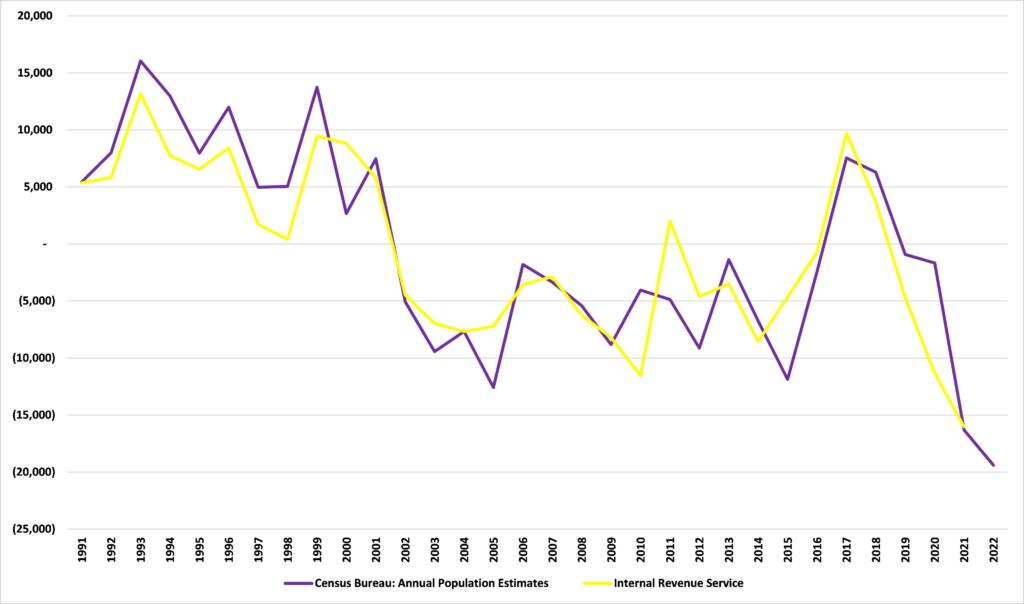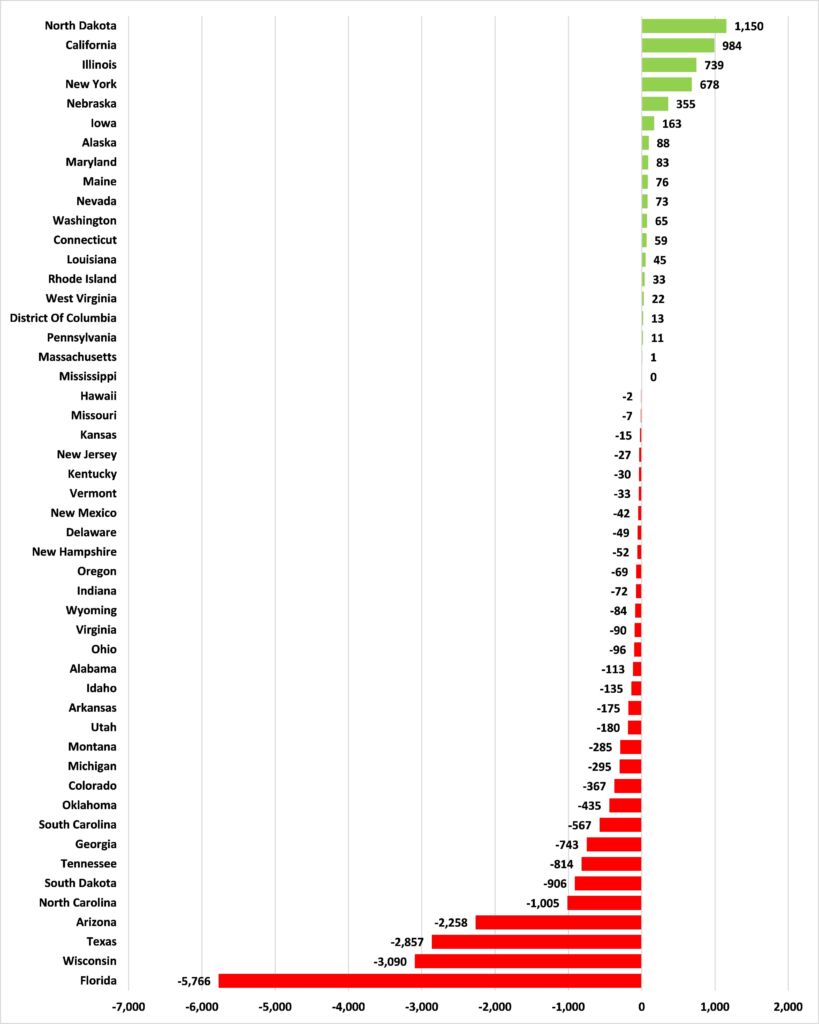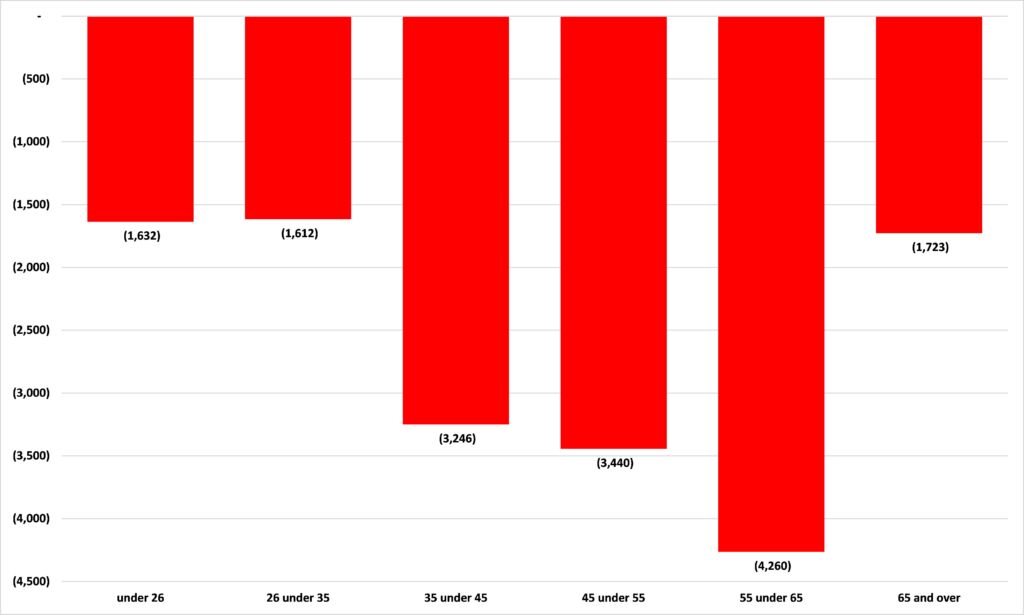New IRS data show number of Minnesotans fleeing to Florida increased by 47% in most recent year
Back in December 2021, I wrote about newly released Census Bureau data that showed that Minnesota lost a net 13,453 residents to other states in 2020-2021, the most in more than 30 years. Newly released data from the Internal Revenue Service (IRS) shows where they went.
Figure 1 shows the net flow of domestic migrants into and out of Minnesota since 1990-1991. We generally recorded positive numbers, but these went negative in the new century and the numbers for the last few years have been the worst on record. As I’ve noted before, the net outflow of residents from Minnesota is not a new phenomenon, but the pace has accelerated sharply since Governor Walz took office in 2019.
Figure 1: Net flow of domestic migrants into and out of Minnesota

Figure 2 shows the IRS numbers for the net flow of domestic migrants into and out of Minnesota by state for 2020-2021. We see that Minnesota lost 16,021 residents overall in 2020-2021, the largest outflow recorded by the IRS since at least 1991. It also shows that the primary source of migrants into Minnesota was North Dakota, probably a result of that state’s economic difficulties arising from the federal government’s war on America’s extractive industries. California, Illinois, and New York rounded out the top four sources of migrants into Minnesota. Figure 2 also shows that Minnesota lost 5,766 residents, net, to Ron DeSantis’ Florida in 2020-2021, a 47% increase on the loss of 3,921 in the previous year.
Figure 2: Minnesota’s net domestic migration by state, 2020-2021

Isn’t that just people retiring? No.
Figure 3 shows the IRS’ numbers for Minnesota’s net migration broken down by age. We see that, in 2020-2021, Minnesota lost residents in every single age category: indeed, people aged under 45 accounted for 41% of the net outflow of Minnesota residents in 2020-2021. Residents of all ages are fleeing Minnesota.
Figure 3: Minnesota’s net domestic migration by age, 2020-2021

Isn’t it just rich people fleeing? No.
Figure 4 shows the IRS’ numbers for Minnesota’s net migration broken down by the income of the primary taxpayer. We see that, in 2020-2021, Minnesota lost residents, on net, in every income category above $25,000 a year. Middle class Minnesotans are abandoning the state. By contrast, Minnesota saw a net gain in residents with incomes below $25,000 a year in 2020-2021.
Figure 4: Minnesota’s net domestic migration by income, 2020-2021

These numbers show, once again, that Minnesota is increasingly a state that people want to move away from, not one they want to move to. If state policymakers are serious about changing that, they need to follow evidence-based policies, not chase ideological fantasies.